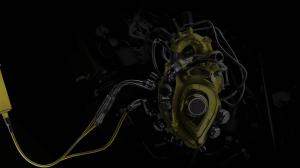The Key Components Of Interior Fit Out Projects
Interior fit-out is a crucial aspect of creating functional and aesthetically pleasing spaces. Mastering this art requires a combination of design sensibility, project management skills, and attention to detail. This comprehensive guide will walk you through the key components of achieving excellence in interior fit-out projects. Find here the best interior fit out company Abu Dhabi for your commercial needs.
Understanding the basics:
Begin by grasping the fundamentals of interior fit-out, including space planning, color schemes, and materials. Gain insights into the importance of balancing functionality with design aesthetics. This foundation is essential for creating spaces that not only look good but also serve their intended purpose efficiently.
Design principles for interior fit out:
Explore design principles such as balance, harmony, contrast, and rhythm. Understand how these principles influence the overall feel of a space. Applying these concepts judiciously can transform a mundane interior into a captivating environment.
Material selection and quality:
Dive into the world of materials, understanding their characteristics and applications. Learn to select materials that align with the design concept while ensuring durability and cost-effectiveness. Quality materials contribute significantly to the longevity and appeal of the fit-out.
Project management in interior fit out:
Effective project management is a cornerstone of successful interior fit-out. Develop skills in budgeting, scheduling, and coordination with contractors. Timely decision-making and clear communication are crucial to ensuring that the project stays on track and meets deadlines.
Sustainable interior fit out practices:
Incorporate sustainability into your fit-out projects by selecting eco-friendly materials, optimizing energy usage, and minimizing waste. A commitment to sustainability not only benefits the environment but also enhances the reputation of your projects.
Ergonomics and user experience:
Consider the comfort and well-being of the end-users. Understand the principles of ergonomics to create spaces that are not only visually appealing but also functional and comfortable. A user-centric approach ensures that the fit-out meets the practical needs of the occupants.
Legal and regulatory compliance:
Familiarize yourself with local building codes, regulations, and safety standards. Adhering to these guidelines is not only a legal requirement but also essential for ensuring the safety and well-being of the occupants.




